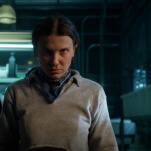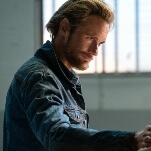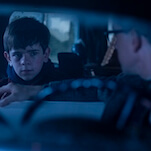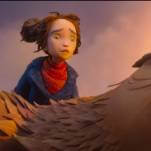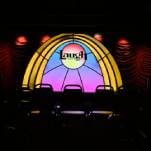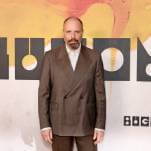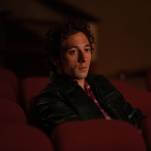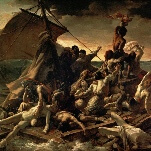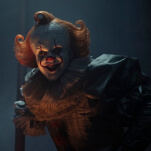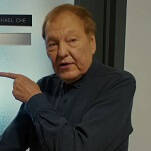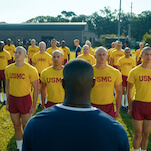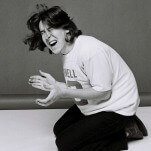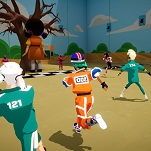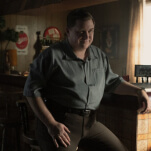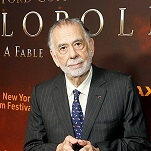In Getaway, Ethan Hawke races a souped-up Shelby Super Snake around Sofia, Bulgaria, completing Grand Theft Auto-style errands—smash every Christmas decoration in a park, outrun the cops for four minutes, deliver a USB drive—for a mystery man who is holding his wife hostage. In the process, police cars crash, ambulances flip, and motorcycles get dragged under trolleys. The force of each collision is defused by the movie’s compound-eye visual style: Low-resolution cameras are mounted on the dashboards, fenders, and rear bumpers of the stunt cars; movement gets dispersed across multiple angles which are cut together rat-tat-tat, so that every crash becomes a machine gun burst of grainy visual noise.
Hawke’s passenger is bratty banking heiress Selena Gomez; the Super Snake was her graduation present, and Hawke is instructed to take her hostage after she attempts to steal the car back from him. Aside from Hawke and the unseen mystery man, she is the only other character in the film—unnamed, with a sentence fragment’s worth of backstory and a handful of useful skills.
The plot—which eventually comes to involve some kind of high-tech bank heist—is irrelevant, because Getaway consists mostly of clipped car crashes interspersed with shots of Hawke pretending to drive while Gomez makes shocked faces. It’s a car movie where cars are rarely shown moving for very long; director Courtney Solomon (Dungeons & Dragons) is more interested in their destructive power. The muscle car—the B-movie’s go-to symbol of outlaw freedom—becomes a prison which Hawke and Gomez can escape only by destroying other cars.
And yet, for the most part, Getaway lacks tension and violence. Strobe cuts rob the stunts of any sense of motion; twisting metal, seen in half-second snippets, becomes abstracted texture. While it’s possible to appreciate this stuff on an individual level, it doesn’t quite add up to an action-movie whole. Consonance is the key to making a chopped-up aesthetic work; without it, Getaway becomes little more than a boneheaded chase flick with unusual camera angles. Solomon’s car-mounted camera rises above gimmickry only in the climactic chase, which is shown largely in a long take from the perspective of the Super Snake’s bumper; for a moment, the car becomes one with the camera, and its power, danger, and destructive potential become palpable.




